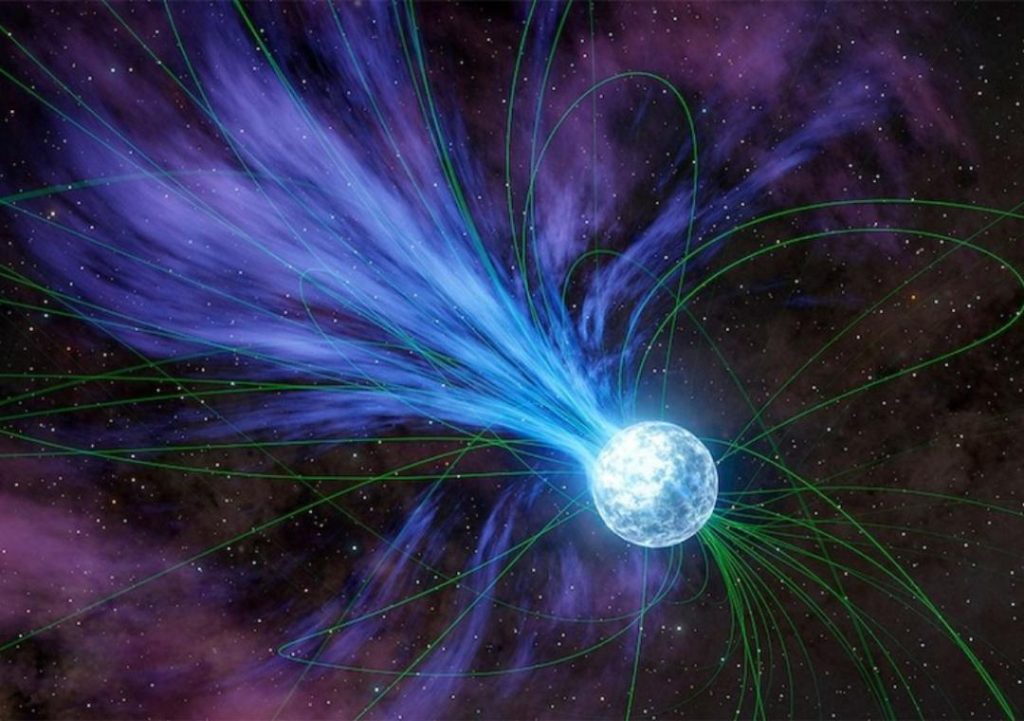
Gold & Platinum Created through Neutron Stars’ Explosions: Study
For centuries, humanity has been fascinated by the origin of precious metals like gold and platinum. Scientists have long debated how these elements came to be, with various theories and hypotheses floating around. However, a recent study has shed new light on the mystery, revealing that magnetars, or highly magnetized neutron stars, played a crucial role in creating these valuable metals through explosive events.
The study, led by Columbia University student Anirudh Patel, discovered that magnetars exploded and released flares that contained elements like gold and platinum. These explosions occur approximately once per decade in the Milky Way galaxy and annually across the observable universe.
The concept of magnetars is not new, but the role they play in creating precious metals has only recently come to light. In the past, scientists believed that these metals were formed through the collision of neutron stars or white dwarfs. However, this theory has been challenged by the discovery of magnetars, which are capable of producing powerful flares that could have created these elements.
To understand how magnetars create gold and platinum, it’s essential to grasp the basics of neutron stars. Neutron stars are incredibly dense objects formed from the remnants of massive stars that have undergone supernovae explosions. They are characterized by their intense magnetic fields, which can be millions of times stronger than those found on Earth.
Magnetars are a specific type of neutron star that possesses an extremely strong magnetic field, often exceeding 10^15 teslas. This magnetic field is so powerful that it can create powerful flares and gamma-ray bursts, which are explosive events that release an enormous amount of energy.
In the study, Patel and his team used data from NASA’s NuSTAR (Nuclear Spectroscopic Telescope Array) and Fermi Gamma-Ray Space Telescope to analyze the flares produced by magnetars. They found that these flares contained high-energy particles and radiation that could have created the elements gold and platinum.
The process of creating gold and platinum through magnetar explosions is complex and involves the interaction of high-energy particles with the surrounding environment. When a magnetar explodes, it releases a massive amount of energy in the form of gamma-ray bursts and flares. These flares contain high-energy particles, including neutrons and protons, which interact with the surrounding environment, including gas and dust.
As these particles collide with the surrounding material, they create new elements through a process known as rapid neutron capture, or r-process nucleosynthesis. This process involves the rapid capture of neutrons by atomic nuclei, leading to the formation of heavier elements.
Gold and platinum are created through the r-process in the following way: when neutrons interact with atomic nuclei, they create new elements by adding neutrons to the atomic structure. This process continues until the atomic nucleus becomes stable, forming elements like gold and platinum.
The study’s findings have significant implications for our understanding of the origins of precious metals. It suggests that magnetars played a crucial role in creating gold and platinum, and possibly other elements, through explosive events. This challenges the previous theories that these metals were formed through the collision of neutron stars or white dwarfs.
The discovery of magnetars and their role in creating precious metals also raises questions about the potential for finding these elements in other parts of the universe. While it’s unlikely that we’ll find large deposits of gold and platinum on distant planets, it’s possible that these elements could be found in the form of dust or particles that were created through magnetar explosions.
In conclusion, the study led by Anirudh Patel has shed new light on the origins of precious metals like gold and platinum. The discovery of magnetars and their role in creating these elements through explosive events challenges previous theories and provides a new perspective on the formation of these valuable metals. As scientists continue to study magnetars and their role in the universe, we may uncover even more secrets about the origins of the elements that make up our world.
Source:






